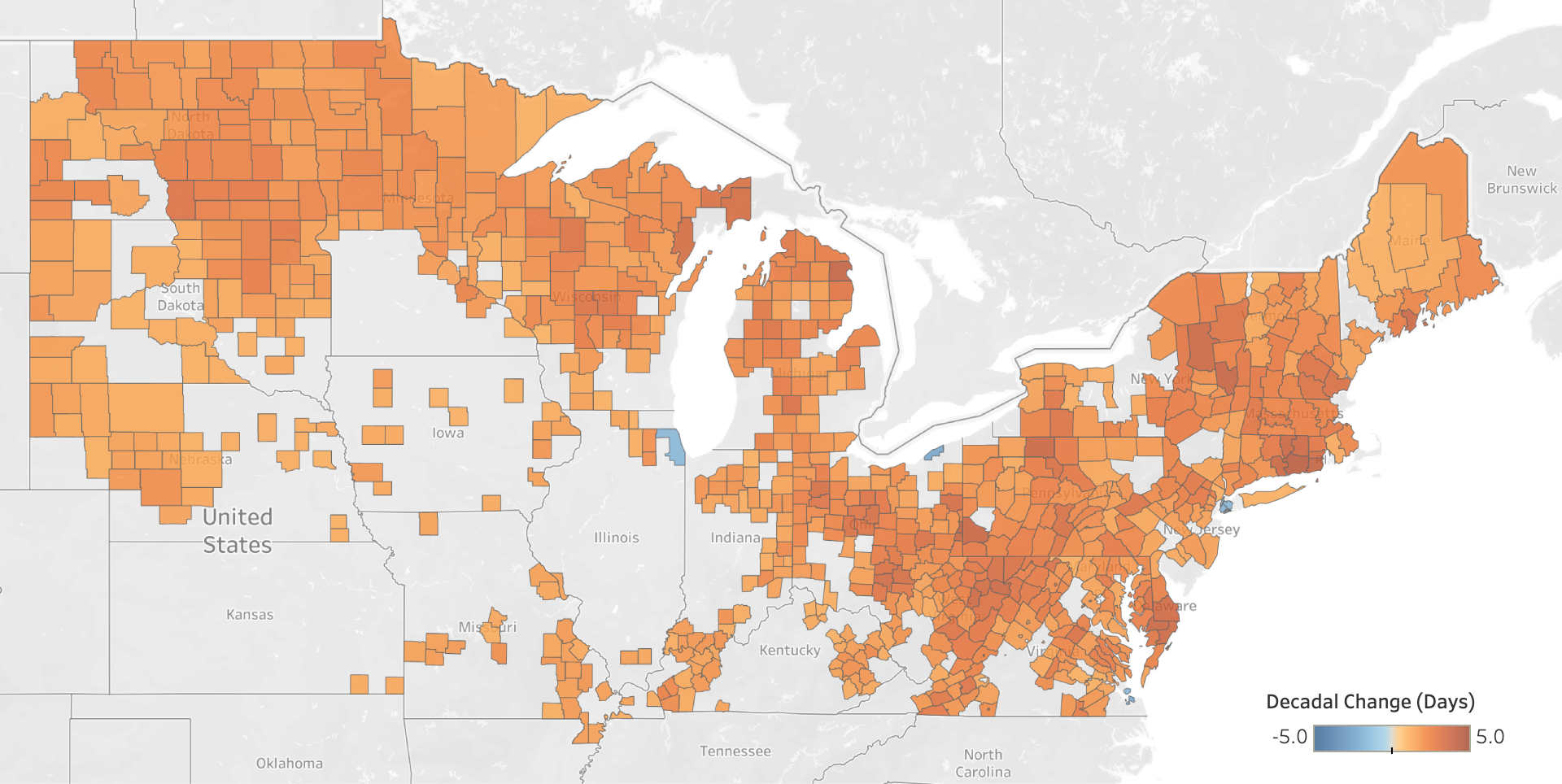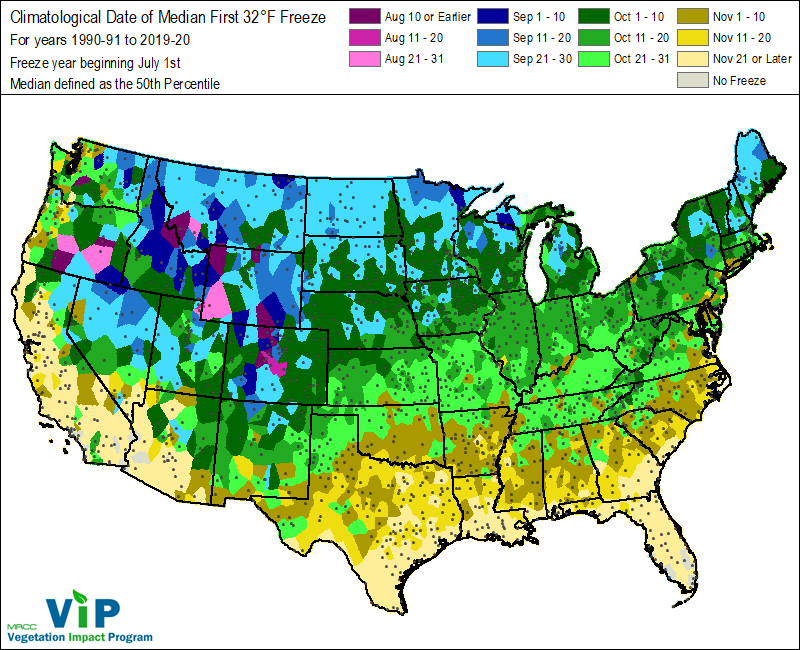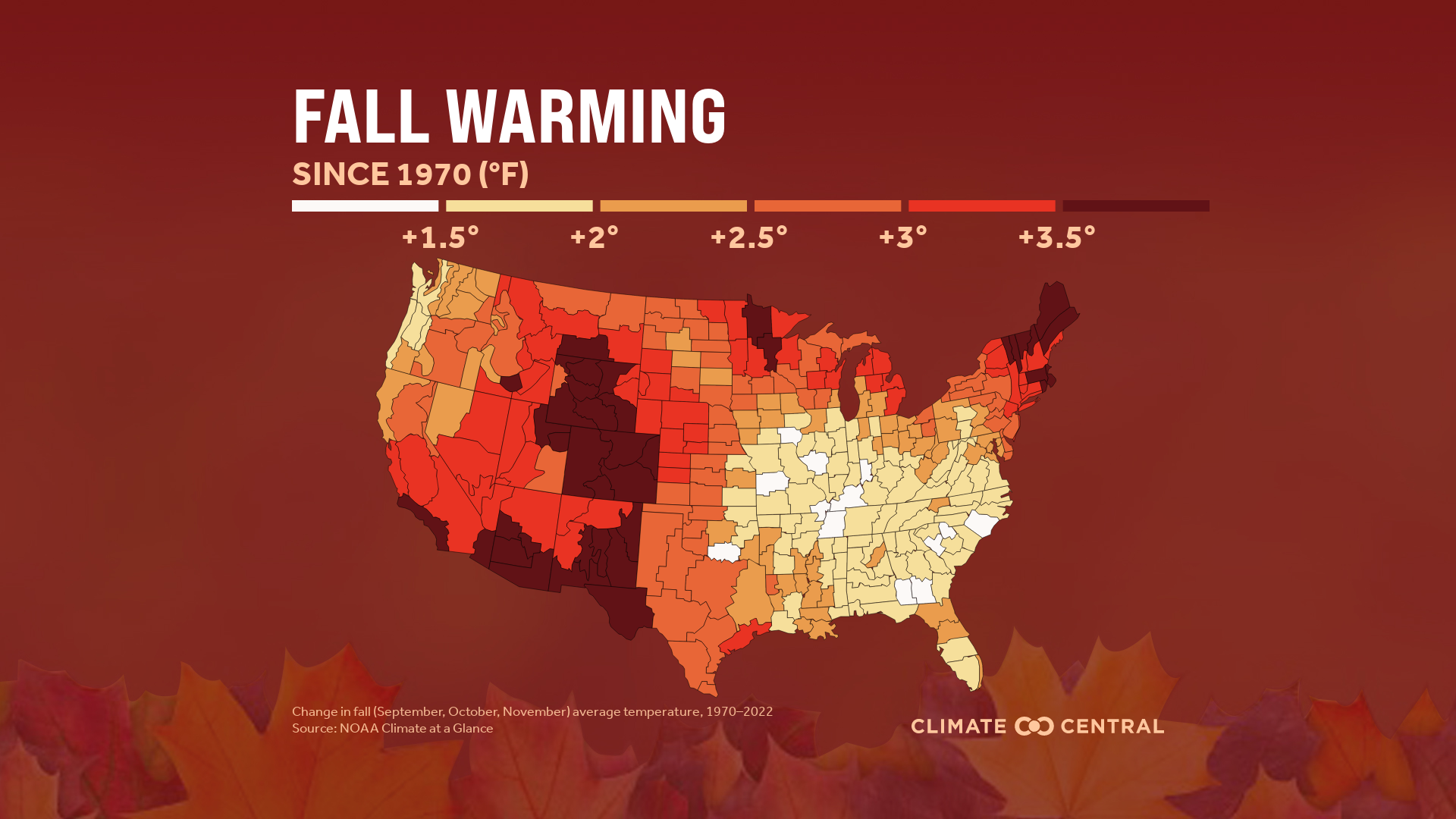Many communities are living through warmer autumns, delaying the first freeze of the season and making freeze-free streaks last longer.
Having mild weather stick around further into the fall might sound great to those who don’t love the cold and snow, but it comes with negative effects.
Climate Central looked at fall temperature trends in 241 cities and found that 232 of them–96%–have warmed since 1970. The average rise was 2.4 degrees, and 71 cities have come up at least three degrees.
Over a third of the 241 cities also experience at least two additional weeks of above-average temperatures each fall compared to 1970.
The warming is most pronounced in the Southwest, Rockies, Upper Midwest and Northeast.
(Climate Central)
Data from the Midwest Regional Climate Center show how much later the first freeze has trended. The counties colored in see that happen, on average, at least a week later now than in 1950.

(Midwest Regional Climate Center)
The number of consecutive freeze-free days in the fall is longer in well over three-quarters of the 201 cities that Climate Central analyzed. Fifty-three cities’ above-freezing streaks are at least two weeks longer than they were 50 years ago.
A longer growing season means ragweed allergies hang on later. If temperatures are warm enough, cooling demand and energy use can become higher because air conditioners have to keep humming along.
Other possible effects are changes to fall foliage (which has both nature and economic impacts), increased wildfire danger and water stress in the western U.S., according to Climate Central.
Wondering when you can plan on the first fall freeze? This map shows the middle-of-road date throughout the country–half of the first freezes come beforehand and half of them come afterward.

(Midwest Regional Climate Center)
Our team of meteorologists dives deep into the science of weather and breaks down timely weather data and information. To view more weather and climate stories, check out our weather blogs section.

